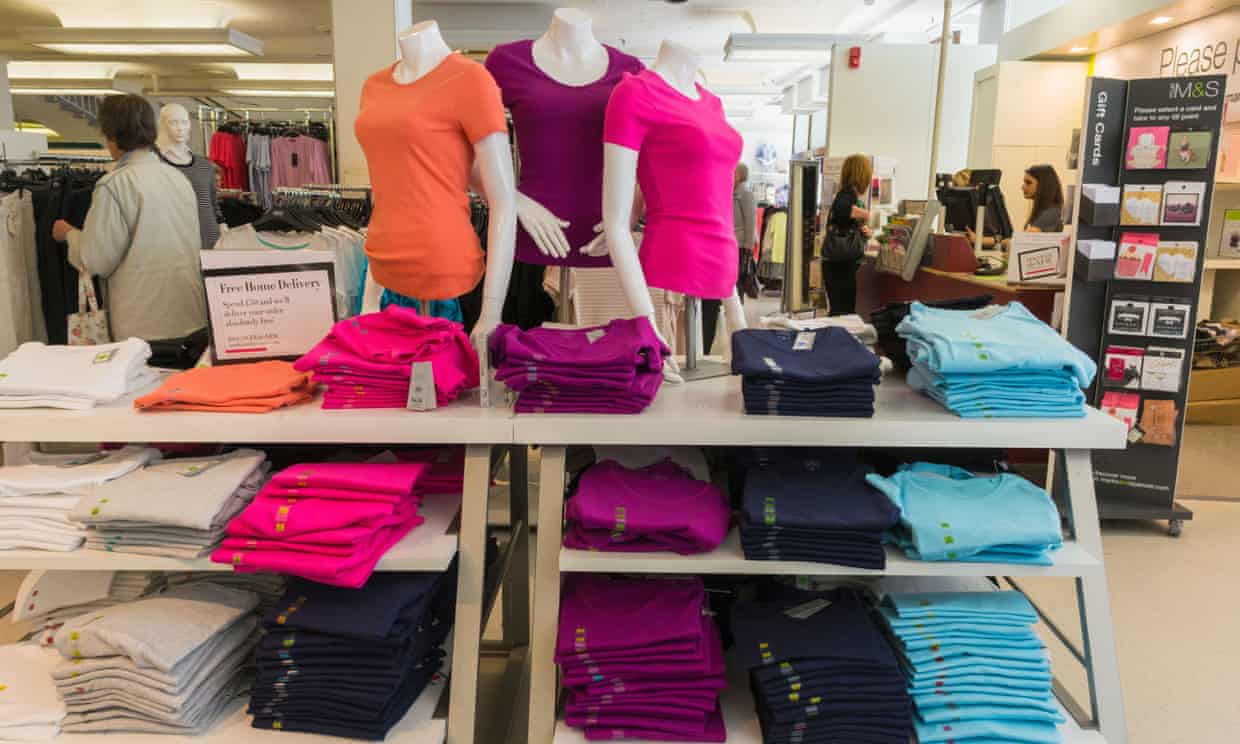Marks & Spencer blames its #SupplyChain. Misdirection? Reflect failure of C-suite to invest in SCM? Trying to make its supply chain do more than it was designed for--how some mean "agile".
Marks & Spencer profits plunge as clothing sales continue to fall
Food halls return to growth as retailer cuts prices and introduces new ranges

Marks & Spencer has reported a fresh slump in clothing sales as poor levels of availability in its stores were compounded by an out-of-date supply chain.
The chief executive, Steve Rowe, blamed the 5.5% decline in like-for-like clothing sales on buying errors that meant popular sizes sold out too quickly. A new design team was shedding its womenswear’s reputation for “frumpiness”, it said, but progress was undermined by the 135-year-old company’s slow and complicated logistics, which meant it could not move products around the country fast enough. This setup contributed to a dire performance from its website, where sales were flat.
Rowe conceded the numbers for the first half of its financial year were “not pretty”. “Clothing is not where I wanted it to be,” he said. “We are about 18 months behind and racing to make up lost time. My No 1 priority is to get under the bonnet of the clothing business.”
Advertisement
He pointed to the stronger performance delivered by M&S’s food halls, where the results of its “transformation” programme were “beginning to show”. The food business returned to growth over the period, with like-for-like sales up 0.9% in the six months to 28 September, thanks to a programme of price cuts and new ranges.
Following almost two decades of attempts to revive the high street giant, Rowe and the retail veteran Archie Norman, who joined as chairman in 2017, are the latest management team to try to reinvent the retailer, which recently lost its place in the prestigious FTSE 100. Like Mothercare, which on Tuesday said it was closing down its loss-making UK chain, M&S is facing an existential crisis as it struggles to compete with cheaper rivals such as Primark and the rise of online shopping.
Jill McDonald was ousted as M&S clothing boss in the summer after buying mistakes ahead of a jeans promotion left it with empty rails for a month. While maintaining its crown as the UK’s largest clothing retailer, sales at the high street chain have now been falling for about eight year
Richard Lim, chief executive of consultancy firm Retail Economics, said M&S’s clothing ranges were “confused” and had been missing the mark season after season: “The race is on to fix its broken business model,” he said. “The sector is evolving at an unprecedented pace and some of the deep-rooted challenges in the business are proving extremely challenging to resolve.”
As part of its fightback plan, M&S is closing 120 full-line stores, which sell clothing and food under one roof. It has struck a deal with Ocado, which will result in the online grocer carrying products from M&S rather than Waitrose from next year.
The contrasting fortunes of the food and clothing divisions have led to speculation that M&S could break up. However, Norman – who made his name with the turnaround of Asda in the 1990s before selling it to Walmart – pointed out that most of the profit in both businesses was made in combined stores. “There are very strong sinews that join the businesses together that make the idea of taking the division too far today completely impractical,” he said.
In a bid to revitalise its clothing business, M&S will cull the size of its range to focus the chain’s massive buying power on a smaller number of potential blockbuster items. It is also changing the fit of its products in an attempt to attract younger customers. In menswear, for example, where shoppers complained that the clothes were “too old”, it has started to stock more slim and skinny-fit trousers.
The shares, which have lost a third of their value over the past year, finished flat at 182p on the update, which showed a 17% decline in pre-tax profits (before one-off items) to £176.5m on sales of £4.9bn. “There’s a lot to do, but I’d like to think that yes, we’ve seen a low point and the start of something different,” said Rowe, when asked if M&S had reached its nadir.
The company also pointed to a recent spike in fashion sales, with full-price and planned promotional sales up 2.7% in October on a year ago. “One swallow does not a summer make – I’ve certainly been here before – but I am encouraged by the reaction we have had,” said Rowe. He said that M&S was seeing dramatic sales uplifts when it managed to get the price, style and availability right – giving the example of jeans, where sales were up 34% in October compared with last year.

Great Article. Call us at 1300 155 465 . Also visit:
ReplyDeleteLogistics Services in Australia
|
Logistics and Services
|
Logistic Dashboards
|
Dashboards services in Australia
|
Dashboards
|
Scheduler
|
Warehouse Management System
|
Warehouse Management System in Australia
|
Transport Management System
|
Transport Management System in Australia
|
Chain of Responsibility
|
Chain of Responsibility Australia
|
RF Scanner
|
RF Lite
|
RF Lite Australia
|